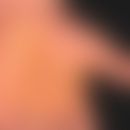Synonym(s)
HistoryThis section has been translated automatically.
Zuehlke, 1974
DefinitionThis section has been translated automatically.
Cytostatic-associated painful, sharply demarcated, edematous erythema of palmae and plantae under or after chemotherapy, leading to a significant reduction in quality of life. Frequent occurrence (up to 42% of all cytostatic patients) has been observed with the use of the following chemotherapeutic agents, among others:
- Aflibercept (Zaltrap).
- Axitinib (Inlyta)
- Cabozantinib (Cometriq)
- capecitabine (Xeloda)
- Carboplatin
- Clofarabine (Evoltra)
- Dabrafenib (Tafinlar)
- Doxorubicin
- Fluorouracil (5-fu-cell)
- Paclitaxel
- Sorafenib (Nexavar)
- Sunitinib (Sutent)
- Taxanes (e.g. docetaxel)
- Trastuzumab (Herceptin)
You might also be interested in
ClassificationThis section has been translated automatically.
With regard to the clinical course, a distinction is made between
- progressive course
- self-limiting course.
Classification of nail changes under chemotherapy(Common Terminology Criteria for Adverse Events Version 4.03):
- Grade 1 (mild): nail changes without functional impairment
- Grade 2 (moderate): Partial or complete loss of the nail plate, pain in the nail bed.
- Grade 3 (severe): Severe nail changes that interfere with activities of daily living and require intravenous or surgical therapy.
EtiopathogenesisThis section has been translated automatically.
Dose-dependent (both with regard to the max. concentration of the active substance and the cumulative total dose), toxic effect of cytostatic drugs. Certain trigger factors such as pressure and shear forces, excretion can intensify the symptoms.
The excretion of best. Chemotherapeutic drugs via the sweat glands. Spreading effects could lead to penetration into the stratum corneum and consequent toxic damage. This pathomechanism would explain the preferred infestation of the sweat gland-rich palms of the hands and soles of the feet.
Toxic damage of the sweat glands is indicated by the evidence of a histological phenomenon, namely"eccrine squamous syringometaplasia", which is understood as reactive proliferation of the eccrine sweat glands after various types of damage.
ManifestationThis section has been translated automatically.
Patients treated with cytostatic drugs; occurrence in almost 40% of cases. Symptoms can occur both a few hours after the start of chemotherapy but also months afterwards. No gender or age predilection. Initially, palmo-plantar dysesthesias occur, followed by burning pain, swelling, and deep red erythema. Areal detachment of the stratum corneum may occur. Ulcers are rare.
Differential diagnosisThis section has been translated automatically.
General therapyThis section has been translated automatically.
The temporary cooling of the hands and feet during the therapy phase has proven to be effective. Furthermore: Dose reduction of the cytostatic therapy or an adapted therapy interruption are the central therapy elements.
External therapyThis section has been translated automatically.
Local cooling of the affected areas (cooling pads).
Further symptomatic treatment with steroidal externals (moderate success).
Opening of large blisters.
Some authors report good success with an "antioxidant-active" cream (Mapisal).
If larger skin defects develop, adequate wound treatment.
Progression/forecastThis section has been translated automatically.
In the further course of the disease, the horny layer may detach. Healing occurs after discontinuation of the cytostatic drug.
Note(s)This section has been translated automatically.
Probably the hand-foot syndrome and the erythrodysaesthesia palmoplantaris are indentical clinical pictures with differently pronounced damage symptomatology.
Practical consequence can have loss or changes of the dactylogram after a hand-foot syndrome, if the print pattern of the fingers changes in such a way that fingerprint analyzer (e.g. also at the cell phone) cannot recognize the print pattern any more.
As a special form of hand-foot syndrome after therapy with taxanes, PATEO syndrome (PATEO = acronym for: Periarticular Thenar Erythema and Onycholysis Syndrome) has been described (Rzepecki AK et al. 2018).
The"fixed erythrodysesthetic plaque" is to be addressed as a minus variant, which shows an analogous symptomatology in a sharply limited area (was observed, among others, after injection of doxitaxel; note: this separate designation can be dispensed with, since identical pathomechanism).
LiteratureThis section has been translated automatically.
- Autier J (2008) Prospective study of the cutaneous adverse effects of sorafenib, a novel multikinase inhibitor. Arch Dermatol 144: 886-892
- Chew L et al (2009) Cutaneous reaction associated with weekly docetaxel administration. J Oncol Pharm Pract 15:29-34.
- Chu CY et al (2002) Fixed erythrodysaesthesia plaque due to gemcitabine and epirubicin treatment. Acta Derm Venereol 82:147-148.
- Jung S et al (2015) Current developments in the prevention and treatment of hand-foot syndrome. Act Dermatol 41: 77-80
- Lassere Y et al (2004) Management of hand-foot syndrome in patients treated with capecitabine (Xeloda). Eur J Oncol 13: 566-575
- Marini A et al (2007) Hand-foot syndrome in a patient receiving capecitabine therapy. Dermatologist 58: 532-537
- Palaniappan M et al (2014) Anticancer drug induced palmar plantar erythrodysesthesia. J Clin Diagn Res doi: 10.7860/JCDR/2014/9133.4975
- Rzepecki AK et al (2018) PATEO syndrome: periarticular thenar erythema with onycholysis. Acta Oncol 57:991-992.
- Sauter C et al (2007) Unilateral necrosis as an abortive form of palmoplantar erythrodysesthesia. Dermatologist 58: 619-622
- Wiedemann M et al (1992) Erythrodysaesthesia palmoplantaris - occurrence of two clinical manifestations? Z Hautkr 67: 1070-1072
Incoming links (17)
Acral erythema; Capecitabine; Common terminology criteria for adverse events; Cytarabine; Dabrafenib; Dactylogram; Dysmaturation epidermal; Erythrodysaesthesia palmoplantaris; Fixed erythrodysesthetic plaque; Fluorouracil; ... Show allOutgoing links (13)
Carboplatinum; Cytostatics (overview); Dabrafenib; Doxorubicin; Eccrine squamous syringometaplasia; Erythromelalgia; Fluorouracil; Mapisal; Paclitaxel; Pateo syndrome; ... Show allDisclaimer
Please ask your physician for a reliable diagnosis. This website is only meant as a reference.













